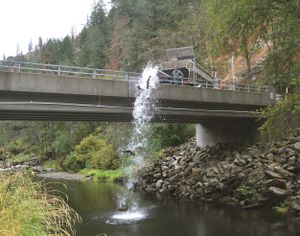Surplus Clearwater chinook used as ‘seed’ for Lolo Creek
FISHING --More than 100 spring chinook salmon not needed at a northern Idaho hatchery have been released into a creek to spawn naturally, giving a boost to the fishery one way or another.
Eric Barker of the Lewiston Tribune reports that workers with Dworshak National Fish Hatchery released the fish Wednesday into Lolo Creek.
Extra spring chinook returned to the hatchery this year, so the fish are surplus, fisheries biologist Tom Tighe said. Workers released the fish in an area with proven spawning gravel just upstream from where Lolo Creek joins the Clearwater River, he said.
Some of the fish might successfully spawn, and all the fish when they die will add nutrients to the food chain.
“This is an opportunity to help bolster nutrients in the system where they are lacking,” said Joe DuPont, regional fisheries manager for the Idaho Department of Fish and Game at Lewiston.
Surplus spring chinook have also been released in tributaries to the South Fork of the Clearwater River.
Besides live fish, the carcasses of spawned spring chinook and steelhead from Dworshak and the nearby Clearwater Hatchery are placed in streams in an attempt to come closer to the kind of system that existed when millions of salmon and steelhead returned to the area to spawn and die.
Putting the dead fish in streams is possible because a new anesthetic used when artificially spawning the fish decomposes in just a few days, said Jeremy Sommer, assistant manager of the Dworshak Hatchery.
“We didn’t have this available to us in the past,” he said. “Now we can do more with them.”
A previous anesthetic used in the hatchery spawning process made the fish inedible for up to 30 days and posed a threat to bears and other animals that might feed on the fish, Sommer said.

